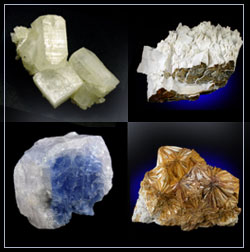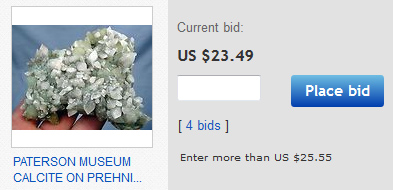
Welcome to the Minerals.net Newsletter
|
Tucson 2013 Show Video
You can also watch the video directly on YouTube: http://youtu.be/yP2ymTdg2C0 |
New “Rock Type” FieldIf you ever wanted to know which rock type a mineral comes from - i.e. igneous, sedimentary, or metamorphic, this data was not easily available. It had to be noted in context from the environment field, and only experts generally have the knowledge of this. Several laymen and students have asked us to describe which one of the three primary rock types a mineral comes from, so we decided to include this information in our mineral guide. We added this field and added an entry for every mineral. This new field is called "Rock Type," and it exists for every mineral in our database. |

New Minerals:Since our last update, we have added the following new minerals, complete with detailed information and lots of photos: |
New Pictures:The following minerals got some new, fresh pictures added: |
Pearl Information Added to WebsiteWith the help of Kevin Canning of PearlsOfJoy.com, we put together many important articles on Pearls. The new content includes a detailed analysis of the many different types of Pearls. Here is a list of all the new Pearl pages added: |
Buying Minerals on eBayEbay is a great resource for buying and selling minerals. It allows buyers to do a search for any specific mineral or variety, and provides the ability to acquire certain minerals at bargain prices. It also allows simple sellers to receive a much larger audience without setting up a complex online store. There are many legitimate and honest dealers on eBay, and many of these have already established a name for themselves and have dedicated followers. These dealers have developed a sense of trust with their buyers, and they often specialize in a regional area. Such dealers usually have high ratings and a large sell count, and are almost always located in the United States or Canada. 
There is, however, what I call the “dark side” of eBay. Some dealers are outright scandalous and totally mislabel their material for higher-valued items. One recent example I have seen is galena geodes from Morroco being sold as natural, while in fact these are fakes. They are created by gluing crushed galena cleavage fragments onto stalactitic quartz/chalcedony growths within a geode. It is bad enough to create and sell such material. But it’s much worse to do that and not mention at all on the page that is is a fake! Some eBay sellers may use exotic, made up synonyms to better market their material, while others provide vague or incorrect locality information on the material they are selling. Another thing to be cautious about when buying on eBay is any minerals or gemstones that could have been heat-treated or irradiated without this information being disclosed. Repairs are another area of concern. While it is accepted practice to repair certain mineral specimens, such as gluing back a broken crystal, this MUST be conveyed to the buyer. A repair on a mineral certainly has an impact on its value, and therefore this information must be presented when a repaired mineral is being offered on eBay. A buyer has no way of knowing whether the specimen was repaired or not on eBay (unless the seller responsibly states this), and sometimes will only notice after the purchase. In general, I always suggest providing repair details on the mineral label, so that this information gets passed on to future generations. |
Give us Feedback!We appreciate feedback! Please email any comments or suggestions, and any errors or bugs you may find on our website. To contact us, please visit our Contact page. |
Copyright 2013 Hershel Friedman | Minerals.net, all rights reserved.

